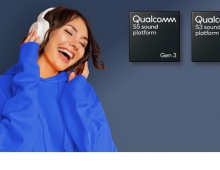
Qualcomm and Deutsche Telekom Collaborate on LTE Direct Operator Trial
Qualcomm and Deutsche Telekom will collaborate on the first LTE Direct operator trial in Germany.
LTE Direct is a new device-to-device technology that enables discovering thousands of devices and their services in the proximity of approximately 500m. This allows the discovery to be "Always ON" and autonomous, without drastically affecting the device battery life unlike other Proximity solutions such as OTT based that use GPS, or BT-LE and WiFi Direct.
LTE Direct uses licensed spectrum, allowing mobile operators to employ it as a way to offer a range of differentiated applications and services to users. It relies on the LTE physical layer to provide a scalable and universal framework for discovery and connecting proximate peers. Qualcomm Research, along with other 3GPP participants are leading the standardization of this feature in R-12.
Much more than just a 'friend finder', proximate discovery is a platform fundamental in defining the next generation of services across an extensive set of use cases from advertising, to SNS, Gaming, Education and more.
LTE Direct uses radio signals - called 'expressions' - which can be private and discreet (targeted securely for certain audiences only) or public (transmitted so that any application can receive them).
Deutsche Telekom is working with Qualcomm Technologies to participate in the trial to showcase LTE Direct?s technology benefits. The trial is enabled by trial devices from Qualcomm Technologies, Samsung, and LTE Direct enabled base stations.
Smartphone Demo of LTE Advanced Category 6
Qualcomm in cooperation with Samsung, SK Telecom and KT, has conducted live demonstrations of LTE Advanced Category 6 connectivity with download speeds of up to 300Mbps on a Samsung Galaxy Note 3 smartphone at Mobile World Congress. The demo was conducted using a specially modified Samsung Galaxy Note 3 for demo purposes, with the latest technology from Qualcomm Technologies, including the Qualcomm Snapdragon 805 processor and Qualcomm Gobi 9x35 modem.
The LTE Advanced Category 6 connection demo supports global carrier aggregation deployments up to 40 MHz for both LTE TDD and FDD, and is backwards compatible to support all other major cellular technologies, including WCDMA /MC-HSPA, CDMA 1x/EVDO Rev. B, GSM/EDGE and TD-SCDMA.
Upon the commercialization of Cat 6, it is anticipated that commercial products with Cat 6 will be introduced.
LTE Direct uses licensed spectrum, allowing mobile operators to employ it as a way to offer a range of differentiated applications and services to users. It relies on the LTE physical layer to provide a scalable and universal framework for discovery and connecting proximate peers. Qualcomm Research, along with other 3GPP participants are leading the standardization of this feature in R-12.
Much more than just a 'friend finder', proximate discovery is a platform fundamental in defining the next generation of services across an extensive set of use cases from advertising, to SNS, Gaming, Education and more.
LTE Direct uses radio signals - called 'expressions' - which can be private and discreet (targeted securely for certain audiences only) or public (transmitted so that any application can receive them).
Deutsche Telekom is working with Qualcomm Technologies to participate in the trial to showcase LTE Direct?s technology benefits. The trial is enabled by trial devices from Qualcomm Technologies, Samsung, and LTE Direct enabled base stations.
Smartphone Demo of LTE Advanced Category 6
Qualcomm in cooperation with Samsung, SK Telecom and KT, has conducted live demonstrations of LTE Advanced Category 6 connectivity with download speeds of up to 300Mbps on a Samsung Galaxy Note 3 smartphone at Mobile World Congress. The demo was conducted using a specially modified Samsung Galaxy Note 3 for demo purposes, with the latest technology from Qualcomm Technologies, including the Qualcomm Snapdragon 805 processor and Qualcomm Gobi 9x35 modem.
The LTE Advanced Category 6 connection demo supports global carrier aggregation deployments up to 40 MHz for both LTE TDD and FDD, and is backwards compatible to support all other major cellular technologies, including WCDMA /MC-HSPA, CDMA 1x/EVDO Rev. B, GSM/EDGE and TD-SCDMA.
Upon the commercialization of Cat 6, it is anticipated that commercial products with Cat 6 will be introduced.





















